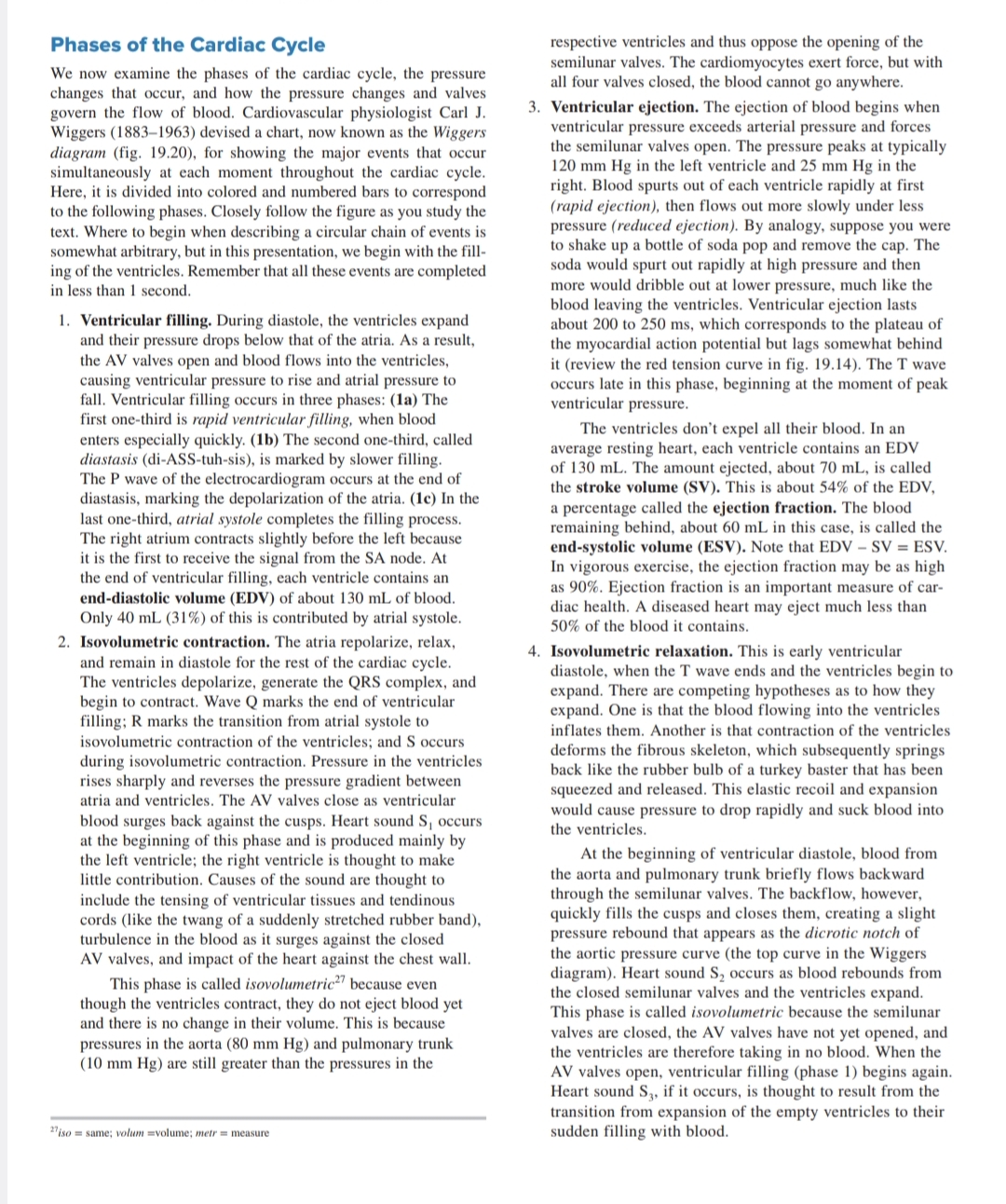What are the phases of the cardiac cycle and the associated pressure changes and valve roles?

Understand the Problem
The question is asking to summarize and explain the phases of the cardiac cycle, focusing on the pressure changes and the roles of the heart valves during these phases.
Answer
Four phases: ventricular filling, isovolumic contraction, ventricular ejection, isovolumic relaxation.
The cardiac cycle has four main phases: ventricular filling, isovolumic contraction, ventricular ejection, and isovolumic relaxation. Ventricular filling occurs during diastole with open AV valves. Isovolumic contraction and ejection occur during systole, and isovolumic relaxation occurs when valves are closed.
Answer for screen readers
The cardiac cycle has four main phases: ventricular filling, isovolumic contraction, ventricular ejection, and isovolumic relaxation. Ventricular filling occurs during diastole with open AV valves. Isovolumic contraction and ejection occur during systole, and isovolumic relaxation occurs when valves are closed.
More Information
The cardiac cycle involves rhythmic contraction and relaxation of the heart, facilitating blood flow. Each phase has distinct pressure changes and valve movements, crucial for efficient cardiac function.
Tips
A common mistake is confusing the phases of systole with diastole. Ensure correct association of valve movements with each phase.
Sources
- The Cardiac Cycle - Pressures in The Heart - TeachMePhysiology - teachmephysiology.com
- Cardiac Cycle | Anatomy and Physiology II - courses.lumenlearning.com
- Physiology, Diagram, Phases of the Cardiac Cycle - BYJU'S - byjus.com